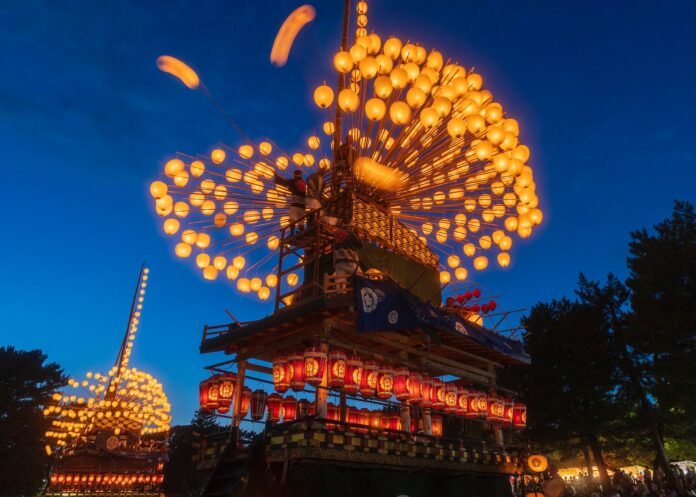We can all agree that social media has come to dominate our lives. From the latest celebrity news to sharing pictures of our lunch, we turn to social media for information and entertainment. But, how does social media influence us to participate in popular trends? Let’s take a closer look at the association between social media and viral challenges.
1. What Are Viral Challenges?
Viral challenges are wildly popular tasks which, when completed, garner attention on social media platforms. Now integrated into our daily lives, it’s unprecendented to see people across the world participating in one giant, inclusive activity.
In the past, these viral challenges have ranged from stages of ice bucket challenges, to dances like the floss and the fortnite dances, and even just a few seconds of people filming themselves lip syncing their favorite songs. Though their formats have changed, the end result remains the same, gaining attention for yourself, your cause, and your message.
No matter why these challenges have taken off, it’s undeniable that the allure of participating in a collective activity has people beguiled. Watching as everyone around you take part, it’s difficult not to feel compelled to check out what’s going on.
- Viral challenges are wildly popular tasks.
- These range in format from something as simple as lip syncing, to more elaborate dances.
- The allure of participating in a collective activity makes them incredibly engaging.
These acitivites are part of the modern day, but the next great challenge awaits. Who knows what’ll be the next phenomenon worldwide?
2. Matters of the Meme: Social Media’s Influence on Popular Trends
As a result of the online environment, society has become more connected, allowing for the formation of popular trends and culture dubbed the “meme culture”. Memes themselves achieve wide-spread popularity primarily by way of social media, spread rapidly by word of mouth, internet or television thanks to the ability of the Internet to reach large audiences quickly and easily.
The Impact of Social Media
Social media’s influence in the meme’s popularity and subsequent widespread proliferation is hard to ignore. It has become an intrinsic part of how modern culture is consumed and weaved into our daily lives, as almost every day, a new viral post, video or image spread and creates an ‘internet sensation’. People actively engage and circle the post as those with massive followings and influence can give everlasting recognition to the meme, ensuring it is well remembered.
Advantages of Meme Culture
The resulting effects from this culture can be seen widely, with entrepreneurs and businesses capitalizing on opportunities provided by this increasingly popular genre. Motivational speaker, comedians and musicians are able to connect with their target audiences with relative ease, with memes serving as an effective tool for messaging and publicity. Furthermore, the meme could also shake up the political commentary scene, and to the extent of even allowing the voice of the people to be heard.
Downside of the Meme Culture
Unfortunately, the meme culture cannot guarantee for the accuracy of the content and messages passed on. Fake or harmful information is also spread just as easily, resulting in a culture spilt with half truths. Moreover, the idea of the “meme culture” itself could actually graduates to turn the spread of ideas to just entertainment, a mere form of distraction from the harsh truths.
Nevertheless, the meme culture does have its benefits, ranging from marketing strategies to education and it would seem that this trend will continue to pervade our daily lives, shaping the modern day culture and collective psyche.
3. Spreading Like Wildfire: Exploring the Internet’s Impact on Viral Challenges
The digital age has enabled the spread of viral challenges faster than ever before. Through the internet, videos, games, and memes can be shared among people from virtually anywhere in the world. But what do these viral challenges mean for the internet and culture overall?
Viral challenges can be incorporated into a host of different online activities, from viral hashtag challenges that encourage people to share their stories to celebrity-pegged dance challenges.
No matter what form they take, one thing is clear: they can go from unknown to front-page news in a matter of days. This rapid spread of information, ideas, and activities raises interesting questions about the impact of the internet on cultural trends.
For example, consider the ‘Kiki Challenge’ which took the world by storm in 2018. It was viewed over 5 billion times across the globe and spurned countless memes and parodies. It’s fascinating to see how it quickly jumped from a somewhat unknown dance routine to a worldwide phenomenon.
Viral challenges can also have more serious implications. The #MeToo movement in India began as an online hashtag challenge in 2018 and grew to become an internationally recognised movement. This, undoubtedly, wouldn’t have had the same impact without the immediacy of the internet.
To summarise, the internet’s impact on viral challenges can be seen in a few key ways:
- They can draw attention to social issues, such as the #MeToo movement.
- They can encourage people to express themselves publicly online.
- They can spread from unknown to mainstream in a matter of days.
- They can be used to promote cultural trends and habits.
The reach of the internet has made it much easier for viral challenges to take root, leading to some interesting observations about the influence of the internet on cultural trends.
4. Unpacking the Potential: Evaluating the Role of Viral Challenges in Society
In recent years, social media has become integral to many people’s lives. Nowhere has this been more evident than in the phenomenon of viral challenges. What began with the simple concept of the “ice bucket challenge” has ballooned into an array of competitive, light-hearted, and sometimes even charitable activities.
It is easy to understand why these challenges are so captivating – their simple, often lighthearted nature, makes them easy to replicate and adapt to one’s own purposes. Videos like “Don’t Judge Me,” or “Try Not to Laugh” have also taken the world by storm, creating a sort of folklore of challanges for all sorts of occasions that binds people together and creates an atmosphere of friendly competition.
- Uplifting the participants
These activities offer people a chance to come together, share ideas and experiences, deepen their relationships, and push themselves out of their comfort zone. The potential positive impact of these viral challenges on self-development and personal growth is hard to ignore. They offer a sense of accomplishment, coupled with the camaraderie shared with friends and family within each challenge.
- Engaging with society
The sheer scale of these viral challenges also imply their potential to draw attention to global issues, or other sociocultural issues. As more and more people join in the conversation, the more likely it is that people will become aware of common ground and keep such discussions alive. Not all viral challenges need to be fun or dare-based to draw attention to an important issue – they can also take the form of inspiring stories that highlight the humanity of groups affected by these issues.
- Evolving for the better
Overall, viral challenges provide a worldwide platform to bring together people who are interested in the same topics, celebrate what they have in common, and motivate them to become more involved in society. They can, with the right guidance and care, foster increased empathy, critical thinking, and engage with the public in more meaningful ways.
As the digital age continues, so too do these viral challenges—products of the ever-changing online world. These challenges offer great opportunities for marketers and entrepreneurs as well as a source of entertainment for social media users. The next time you’re scrolling and you come across the latest challenge, be sure to join in and see it spread like wildfire across the web.



